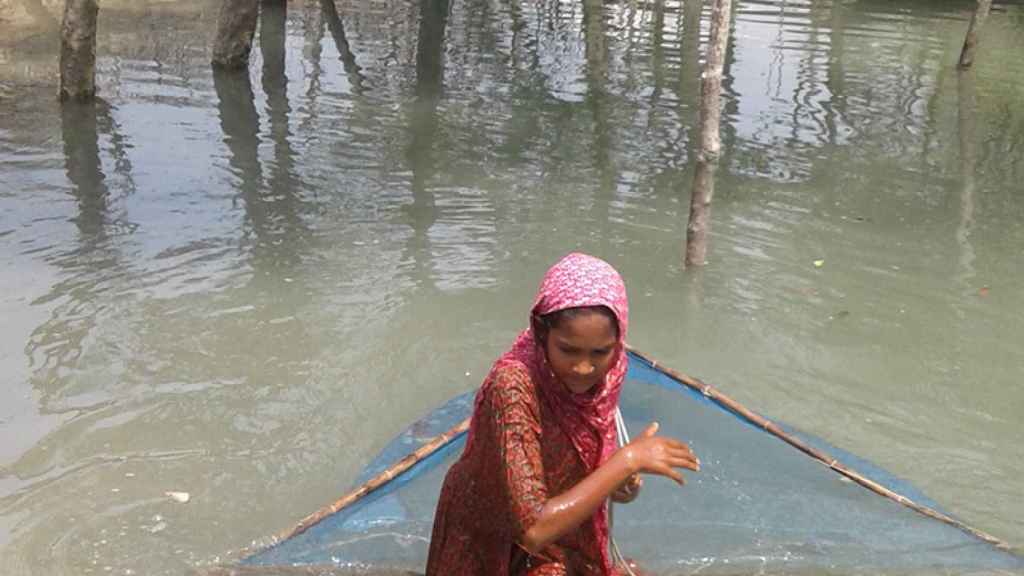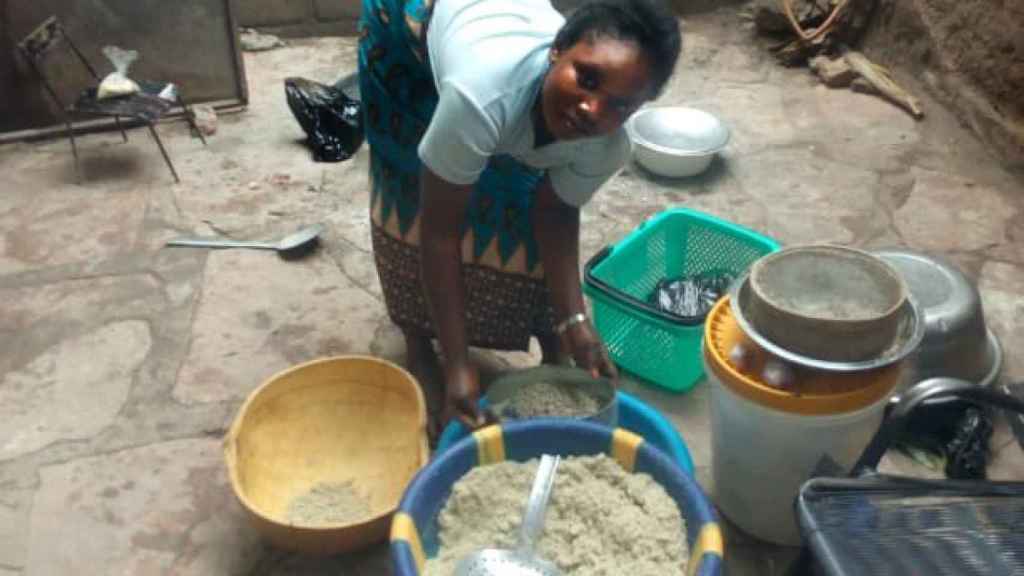Catch fish and crabs in the river with a net for three to four hours a day. This is Sabina’s job. He is 12 years old and it does not matter if the sun is burning or there is a storm, he never misses his work. The reality of the minor is to earn money for “make sure your family can eat “.
He lives in Bangladesh, a country where rural areas are full of minors working in the agricultural sector. Like her, 160 million boys and girls around the world are in child labor, according to data from the International Labor Organization (ILO) and Unicef.
The causes of child labor are undetermined. But the global cooperation NGO that defends children’s rights, Educo, considers that behind this practice there is a combination of factors. “Poverty, the lack of employment opportunities for fathers and mothers, social marginalization and even the social norms that tolerate this practice”, they assure from the organization.
Sabina fishing in the waters of the Khelpetua River in Bangladesh.
Educo
In your report Covid-19: Impact of the pandemic and consequences on education, The NGO indicates that 3.45 million children work in Bangladesh, 95% of them work in the informal economy and, most perform dangerous tasks. Like Sabina, they can even work days of 10 or 12 hours a day.
Many times these tasks are carried out in the family environment, mainly in family farms or micro-businesses. This entails a certain danger, since almost half of the children between 12 and 14 years of age who work within the family unit “carry out tasks that are likely to damage their health, safety or moral development,” the report indicates.
“I don’t think I can go back to school, it coincides with my work schedule,” says Sumaya.
The inability to access basic needs in extreme environments of poverty it makes minors have to work to, as the expression says, bring bread home. Sabina wants to go back to school and be with her friends, but it is impossible: her parents, she says, suffer serious physical damage and she has to help them.
educate to save
“I may have to work to help my family, but I honestly don’t want to,” says Shorif. At just 13 years old, this Bangladeshi is aware that studying would improve his life. But it is out of reach.
Due to the covid-19 pandemic, a large number of schools in this Asian country -where eradicating child labor remains a challenge- they have closed their doors. The education system has been overwhelmed, especially in places where resources are scarce.
Child labor affects 160 million children worldwide
According to Educo, during the massive closure of schools, around 433 million students were left out of the educational system. Without the necessary tools, distance learning could not materialize.
To this figure should be added the 250 million boys and girls who, before the current crisis, were already out of school.
“My work schedule coincides with school,” says Sumaya, a 13-year-old Bangladeshi. Although the schools reopen, he fears he will not be able to rejoin. And it is that the classrooms became the elements of protection that children needed against the violations of their rights.
Currently, all of them live in uncertainty. They have been forced to work and have dropped out of school. Lack of schooling puts their future at risk and, too often, they become cheap labor for factories.
From Educo they warn: this labor exploitation of childhood “is commonplace in many Asian countries.”
Irreversible damage
They do not play, they mature prematurely and unintentionally. In addition, your health – physical and mental – can be impaired. The consequences of forced labor for minors are devastating.
Some do so in hostile and violent environments, where their rights are constantly being violated. This them generates physical and psychological damage such as depression, adjustment problems, or low levels of self-esteem.
Hawa Diarra doing housework.
Educo
In Mali, young girls are forced to working in slavery conditions at home. There, they usually stay at home taking care of the babies. 14-year-old Hawa Diarra had to “make a living” after her mother died. He went to live with his aunt in the country’s capital, Bamako.
“I did this trip because I had no means to pay for my clothes, my health or any other expense, “she says. Later, her aunt took her with some neighbors, whom, now, she serves as a housekeeper.
Many of these young women, moreover, they suffer physical and sexual abuse. And they even become pregnant.
A similar reality is that many children live in the mines of Burkina Faso. In them, Nacanabo Karim saw “people die.” This is how this young man, who is now 19 years old, recounted it and who left school in his small village to be a workforce in a mine that belonged to his father.
“He felt that he was risking his life for nothing,” he says. Fortunately, an injury improved his situation. At last he was able to return to his village, from which he fled to look for money.
86.6 million children are forced to work to survive in Sub-Saharan Africa
And it is that Sub-Saharan Africa is the region with the higher prevalence and higher number of children working. According to data from the ILO and Unicef, child labor in it reaches 23.9% of young people between 5 and 17 years of age. That is, 86.6 million children are forced to work to survive.
The ILO and Unicef are blunt: “We are at a critical juncture “ in global efforts to end child labor. Which shows us that, more than ever, we need immediate measures so that these children stop becoming adults before their time.
Follow the topics that interest you
Reference-www.elespanol.com

